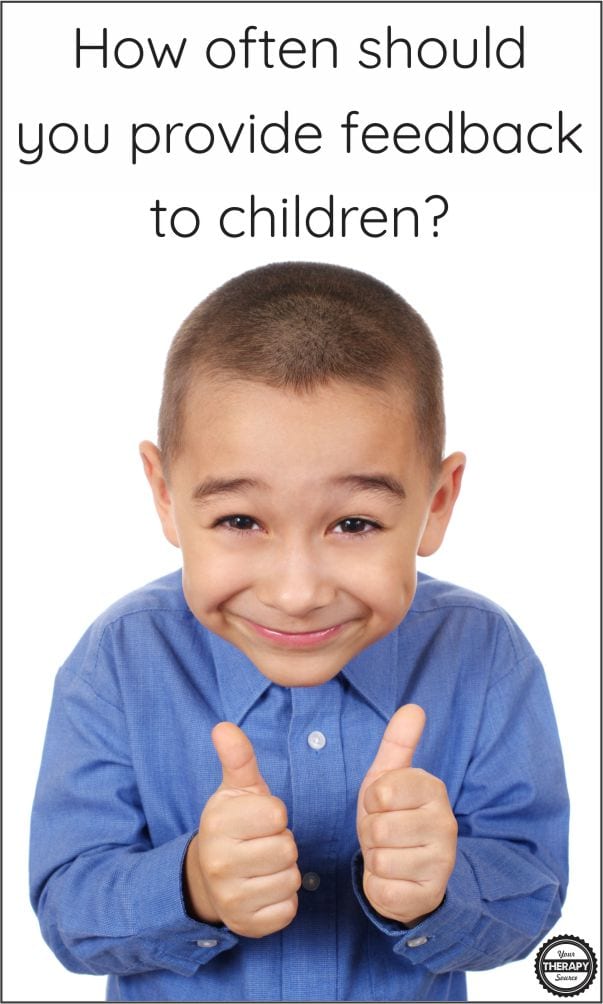Feedback Frequency with Children

What do you think is the best feedback frequency with children when learning a motor task? Previous research with adults indicates that providing feedback 100% of the time when learning a new task is less effective than when less feedback is provided. In addition, previous research has indicated that children with cerebral palsy benefit from less feedback whereas typical developing children benefit from more feedback.
Feedback Frequency with Children Research
Physical Therapy published research where children threw beanbags for accuracy at an unseen target while walking or while standing still. Knowledge of results was provided 100% of the time and 33% of the time. Retention tests without feedback were performed 5 minutes later and then one-week later. Also, transfer tests were completed to check the generalization of learning.
The results on feedback frequency with children indicated the following:
- learning was improved on the easy version of the task when knowledge of results was provided 33% of the time during practice.
- learning was improved in the difficult version when knowledge of results was provided 100% of the time during practice.
The researchers suggest that when teaching motor skills to children one should provide feedback based on the complexity of the task.
When you are teaching children new motor skills do you take into account how difficult the task is and how often you provide feedback? In my opinion, I find it to be human nature – when a child is struggling to learn a new task I provide more feedback and if the task is easier you do not need to provide as much feedback.
Celebrate the Learning of New Skills
When children have learned new skills celebrate them all – tiny accomplishments and reaching big goals. The type of positive feedback for children can help to motivate them to reach more goals and learn even more new skills.
Check out the Punch Cards and Reward Cards for Therapy. This digital download includes 40 punch cards and 10 reward cards for motivation to complete pediatric therapy goals. Set goals for the student to achieve. When the student completes an activity, punch a hole in the card. After 10 punches, the student chooses a reward card (with free prize suggestions). Also included is a list of 30 free or low cost rewards.
Reference: Sidaway B, Bates J, Occhiogrosso B, Schlagenhaufer J, Wilkes D. Interaction of Feedback Frequency and Task Difficulty in Children’s Motor Skill Learning. Phys Ther. DOI: 10.2522/ptj.20110378 Published July 2012



